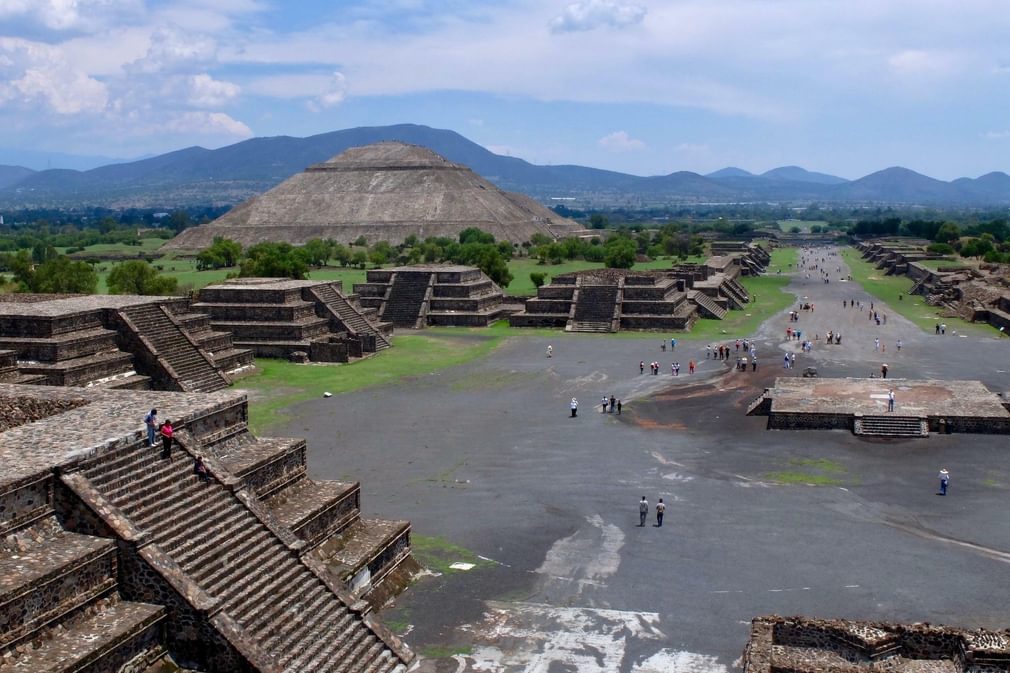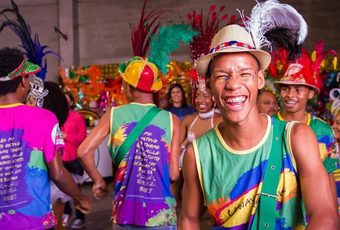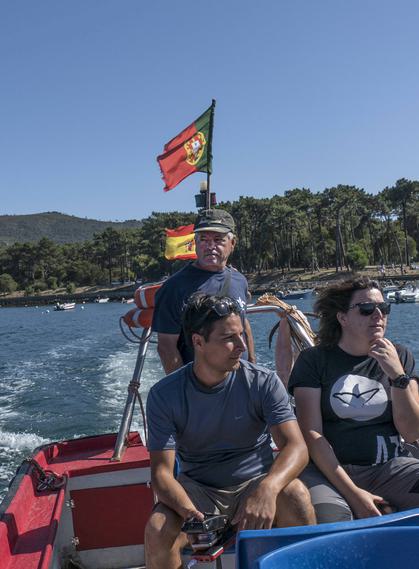Pre-Columbian ruins that capture the imagination

Over thousands of years, pre-Columbian civilisations have left their mark on Latin America's landscapes in countless ways - as cities and palaces, petroglyphs and statues, rocks shaped into perfect spheres and human heads, roads and canals, paintings, and tombs. These monuments connect us to the extraordinary skill and creativity of ancient cultures, to a deep connection to the earth and skies, to other belief systems, and something that can occasionally verge on the 'alien'.
They tell a story, sometimes defy belief, and they make you want to see them for yourself.
Here are ten sites that have made a lasting impression on us:
Tikal, Guatemala
Tikal so perfectly embodies the aesthetic ideal of a lost city that you could be forgiven for imagining you have stepped into the pages of an adventure novel, assuming you can ignore the other visitors around you. The truth is certainly far worthier of awe: it is one of the most beautiful archaeological sites left by the Maya, and one of its most important cities.
Hieroglyphics and tombs reveal a centuries-long dynasty of rulers and tell a story of the city's place in the wider world of its time, its wars and alliances, growth and decline. Strikingly tall pyramids rise up above the tree canopy; below, the city's terraces, houses, ball game courts, roads and causeways spread out across a huge expanse of remote tropical forest. Protecting both the ruins and the species that inhabit the surrounding forest, Tikal National Park is one of few World Heritage sites to be known for both its outstanding historic value and its biodiversity.
Teotihuacan, Mexico
The first thing you notice about Teotihuacan is how impressive it is. More reminiscent of Egypt than Latin America, the vast Pyramids of the Sun and Moon stand at the end of the imposing Avenue of the Dead - the centre of a city that is thought to have been the sixth largest in the world at its peak almost 2000 years ago.
The Aztecs are believed to have given the city the name Teotihuacan, which roughly translates as 'the place where the gods were created.' Teotihuacan had already been abandoned for several centuries by the Aztec era and the name is a good indication of the sense of awe the city must have inspired. You can identify with that feeling as you walk along the Avenue of the Dead and look up at the Temple of the Sun, one of the largest pyramids in the world.
Rapa Nui, Chile
As the most remote inhabited island in the world, tiny Rapa Nui would be largely unknown to the rest of the world if it were not for its unique legacy - the monolithic moai statues which are an enigmatic portrait of a vanished culture.
Built to preserve the memory of ancestors, there are hundreds of moai on the island and they tell a fascinating story of the rise and fall of the moai religion. Some statues are still embedded in the slopes of the Rano Raraku volcano in the process of being carved; others broke apart while they were being moved to their final destinations. Then there are those that were torn down from their ceremonial platforms (ahu) during a period of civil war - thought to be connected to the deforestation of the island in the drive to build more moai - and they still lie as they fell, face down, their necks broken. After the war, not a single moai was left standing - it is only in recent years that restoration efforts have enabled some of the statues to be seen as they were intended.
These are the most famous moai, the ones that have been restored and stand tall in impressive rows on their ahu. At Ahu Akivi seven statues look out to sea in an impassive but somehow moving tribute to the first Polynesian explorers to settle on Rapa Nu. At Ahu Tongariki, the most spectacular moai site, 15 statues represent the honoured figures of former rulers.
Chavín de Huantar, Peru
Founded almost 3000 years ago in a high valley in the Peruvian Andes, Chavín is one of the oldest sites in the Americas. It is unlike any other ancient site in Peru and is particularly known for the unique stone carvings and sculptures that decorate the buildings and plazas: fanged jaguar heads, snakes, condors, caiman, and occasionally human faces.
The most dramatic thing created by the Chavín culture is the Lanzón, a four-metre granite shaft carved in the form of a fanged god and hidden deep within the main temple. Chavín was a place of pilgrimage, and the worshippers of the time would have been led to the Lanzón through dark tunnels under the influence of the hallucinogenic San Pedro cactus.
The sight of the Lanzón would have had a nightmarish impact on people then and it still makes quite an impression today - it almost seems to be breaking out of the narrow confines of its underground chamber, extending through an entire floor of the temple and through the ceiling.
San Agustin, Colombia
The lush hills and valleys of southern Colombia are home to hundreds of incredibly unusual creative and beautifully carved monuments and sculptures ranging in age from 1200 to almost 2000 years old. They are elaborate burial chambers for the chiefs and elite families of an ancient tribal culture, the tombs guarded by massive stone 'jaguar-men.' It is one of the most significant and mysterious sites in South America.
Scattered across a wider archaeological landscape are sculptures and petroglyphs of gods and mythical animals. Some are realistic, and others more abstract. Some are even quite unnerving, with odd triangular heads and grinning teeth. Like silent sentinels, they appear, still, to be watching over the ancient land and the ancestors buried beneath it.
Chichen Itza, Mexico
Chichen Itza's main temple, El Castillo, is one of the most recognisable ruins in Latin America, voted one of the new seven wonders of the world in 2007. The pyramid is the centrepiece to a stunning ancient city that, for all its beautiful architecture, is most impressive for its insight into the scientific and astronomical genius of the Maya and Toltec cultures.
El Castillo is a 365-day calendar that marks the equinox twice a year when a shadow falls on the pyramid in the shape of a serpent. As the sun rises to its highest point of the day, the shadow gradually descends the steps to join a stone serpent's head carved into the base of the staircase. Calculating the movement of the sun and translating it into stone and shadow is just one of the ways the Maya turned their advanced knowledge into an art form.
Temple of the Moon, Peru
In northern Peru, incongruous hills in the desert often point to the existence of hidden temples and ancient burial sites, and archaeologists and looters are in a constant battle to get to them first. One of the most important pre-Inca civilisations, the Moche, flourished in the region around 1-800AD and left behind adobe 'huacas' (temples) containing extraordinarily rich and expressive artefacts in honour of their deceased rulers, different generations of which were often buried on top of one another.
Part of the Moche capital, the Temple of the Moon lies at the foot of the Cerro Blanco mountain near Trujillo. Unimpressive on the outside, its clay walls camouflaged in the dusty landscape, the inside of the temple is genuinely surprising and offers a vivid insight into what was a very exuberant culture.
A giant wall of mural paintings and sculpted reliefs depicts lines of warriors and stylized mythical animals. Brightly coloured friezes in red, yellow and black show a figure known as 'Ai-Apaec', the Decapitator. Sacrifice was a common practice during the Moche era and this menacing figure, a human face with a huge fanged mouth, seems to have been central to it, appearing throughout the Moche world in different forms, such as a spider or a crab.
Kuelap, Peru
A massive walled city commanding a spectacular hilltop position deep in the cloud forest of northern Peru, Kuelap is the most important site associated with the mysterious Chachapoyan 'cloud people,' a culture that left behind a landscape rich in ancient monuments from cities in remote forested valleys to groups of sarcophagi set in inaccessible cracks on a sheer cliff face. It is an ideal destination for those who love exploring ruins that are mysterious, uncrowded and, for now, mostly unrestored.
One of the most impressive fortress cities in the Americas, Kuelap is around twice as old as Machu Picchu - yet it is still virtually unknown. Over the last few years, archaeologists have sought to learn more about Kuelap and the Chachapoyan people via long-term excavations which have begun to yield fascinating discoveries, including evidence of ancient bone surgery. With Peru seeking to have Kuelap added to the World Heritage list, it is hoped that further research and restoration will shed light on the Chachapoyan culture and the spectacular legacy they left behind.
Qhapaq Nan (Andean Road System) - Colombia, Ecuador, Peru, Bolivia, Chile & Argentina
The Incas built a system of roads across their empire which extended for more than 20,000 miles and spanned the length and breadth of the Andes. It is one of the most elaborate transportation networks built by any ancient culture, and was awarded World Heritage status in 2014.
Winding around vertical cliff faces and river valleys, across desert plains and thick cloud forest, the trails are an incredible feat of engineering and run all the way from the coast to the highest Andean peaks.
In the Peruvian Andes, the Inca Trail is the most well-travelled section of the road, famous for being the only way to walk into Machu Picchu. Yet this stunning four-day hike is also a journey in itself, offering time to explore remote and beautiful Inca ruins and appreciate the unchanging landscapes of the mountains and cloud forest through which the Incas themselves travelled on foot a few hundred years ago.
Machu Picchu, Peru
Made famous by Hiram Bingham and the National Geographic in 1911, the 'lost city of the Incas' has a timeless appeal that has captured people's imaginations for a century.
Now one of the most coveted travel destinations on earth, Machu Picchu still rises above the crowds. Get there late in the afternoon, when the light is best, and it is quiet enough for you to take in the citadel's dramatic setting, its mystery, and the sheer beauty and ingeniousness of its architecture. It is so intimately connected to the surrounding mountain landscape that the stonework seems to merge at times with the contours of the rock face, and reflect the silhouette of nearby peaks.
That it is still so little understood adds to its incredible capacity to inspire - Pablo Neruda and Che Guevara were just two of the visitors who wrote about their experiences of the ruins, adding to the mythical quality of its fame as a symbol of one of the world's great lost civilisations.
We hope you enjoyed reading about some of our favourite pre-Columbian ruins in Latin America. If you'd like to know more about them or even want to plan a holiday combining one or more of these sites, feel free to call us at 01273 676 712 or email us at info[@]pura-aventura.com.
Our Latin America holidays Get in touch Subscribe to The Pothole
The Pothole is Pura Aventura's popular monthly email. We share what we love, what interests us and what we find challenging. And we don't Photoshop out the bits everyone else does. We like to think our considered opinions provide food for thought, and will sometimes put a smile on your face. They've even been known to make people cry. You can click here to subscribe and, naturally, unsubscribe at any time.
The Pothole is Pura Aventura's popular monthly email. We share what we love, what interests us and what we find challenging. And we don't Photoshop out the bits everyone else does. We like to think our considered opinions provide food for thought, and will sometimes put a smile on your face. They've even been known to make people cry. You can click here to subscribe and, naturally, unsubscribe at any time.







 By
By 
